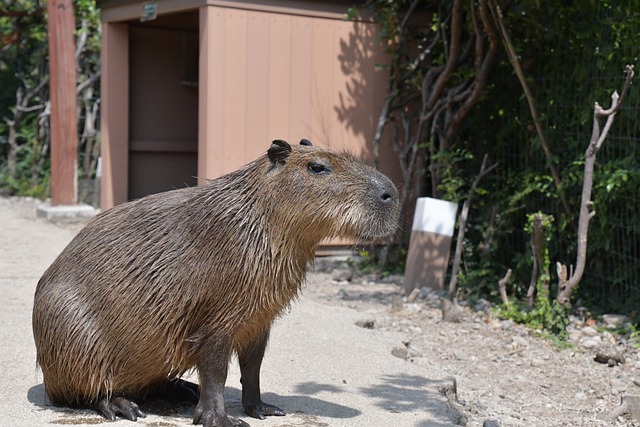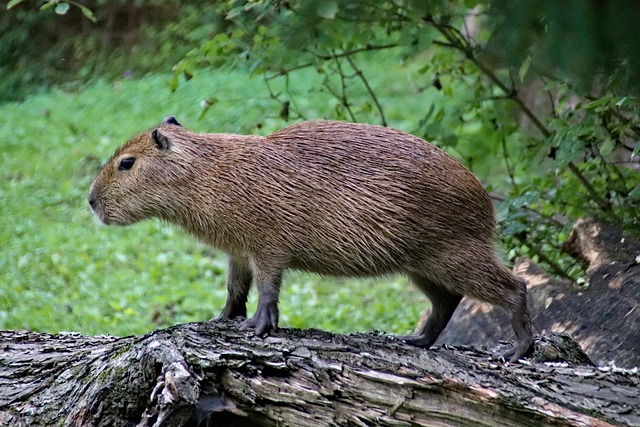Gerbils are fascinating creatures that have captured the hearts of many pet owners. They are known for their playful and curious nature, as well as their unique behaviors.
One behavior that has sparked curiosity among gerbil owners is how they kiss.
Gerbils are social animals that show affection in various ways, including grooming, cuddling, and kissing.
While it may seem unusual to think of gerbils kissing, it is common among these animals. Gerbil kisses are not like human kisses but rather a gentle rubbing of noses or cheeks.
This behavior is a sign of affection and bonding between gerbils.
Understanding how gerbils kiss is essential for pet owners who want to provide the best care for their furry friends.
By observing their behavior, owners can learn more about their gerbils’ personalities and how they communicate with each other.
In this article, we will dive deeper into the fascinating world of gerbil kisses and explore what they mean for these adorable creatures.
Gerbil Kissing: An Overview
Physical Actions
Gerbils are social animals who show affection towards each other by grooming and cuddling. Kissing is one of the ways they express their love.
Gerbil kissing involves touching noses and whiskers and sometimes even nibbling on each other’s ears or fur.
When gerbils kiss, they approach each other with their noses touching and their whiskers twitching.
They may also rub their cheeks together and groom each other’s fur. This physical interaction allows gerbils to bond and strengthen their relationship.
Significance of Kissing
Gerbil kissing is a sign of affection and trust between gerbils. It is a way for them to communicate their feelings and build a stronger connection.
Kissing is also a way for gerbils to establish dominance and hierarchy within their group. The gerbil that initiates the kiss is often the dominant one in the relationship.
It is important to note that not all gerbils will kiss each other. Some gerbils may not be as affectionate as others, and some may not get along with certain gerbils in their group.
Monitoring gerbil behavior and intervening if any aggressive behavior is observed is essential.
In summary, gerbil kissing is a physical interaction that involves touching nose whiskers and sometimes nibbling on each other’s ears or fur. It is a sign of affection and trust between gerbils and is a way for them to bond and strengthen their relationship.
Factors Influencing Gerbil Kissing
Age and Gender
Age and gender are two factors that can influence gerbil kissing behavior. Younger gerbils tend to be more playful and curious and may engage in kissing behavior more frequently than older gerbils.
Additionally, male gerbils may be more likely to initiate kissing behavior than females.
Environmental Factors
Environmental factors can also play a role in gerbil kissing behavior. Gerbils housed in larger cages with plenty of toys and enrichment opportunities may be more likely to engage in kissing behavior than those in smaller, less stimulating environments.
Additionally, gerbils housed with a compatible partner may be more likely to engage in kissing as a form of social bonding.
Overall, while age, gender, and environmental factors can influence gerbil kissing behavior, it is essential to remember that each gerbil is unique and may exhibit different behaviors based on their personality and preferences.
Common Misconceptions About Gerbil Kissing
Despite being a typical behavior among gerbils, kissing can be easily misunderstood. Here are some common misconceptions about gerbil kissing:
- Gerbils only kiss when they are in love. While gerbils do engage in kissing as a way to show affection, it doesn’t necessarily mean they are in love. Kissing is also used as a way to establish dominance or to greet each other.
- Gerbils only kiss with their mouths. Gerbils actually use their noses to kiss each other. They will touch noses, sniff each other, and even rub their noses together as a form of communication and bonding.
- Gerbils only kiss their mates. Gerbils will kiss any other gerbil they are close to, not just their mates. This includes siblings, parents, and even unrelated gerbils they have bonded with.
- Gerbils only kiss in a certain position. Gerbils can kiss in any position, whether standing up, sitting down, or grooming each other. The position doesn’t matter as much as the intent behind the kiss.
Understanding these misconceptions is essential to comprehend gerbil behavior and communication better. Kissing is just one of many ways that gerbils show affection and establish relationships with each other.
Implications for Pet Owners
Gerbils are social animals that form strong bonds with their mates. Kissing is an essential form of social interaction between gerbils that helps to strengthen their bond.
As a pet owner, it is essential to understand the implications of this behavior for the well-being of your gerbils.
Firstly, it is essential to note that gerbils should always be kept in pairs or groups to prevent loneliness and depression.
Gerbils kept alone are more likely to develop behavioral problems such as aggression and self-mutilation.
Kissing is one of the ways that gerbils communicate and bond with each other, so it is essential to provide your gerbils with a suitable mate.
Secondly, gerbils uncomfortable with each other may not engage in kissing behavior. This can be a sign of stress or aggression and may require intervention from the pet owner.
If your gerbils are not kissing, observing their behavior and ensuring they are not fighting or displaying aggressive behavior toward each other is essential.
Finally, gerbils not provided with enough social interaction may become bored and engage in destructive behavior such as chewing on their cage or toys.
Kissing is one of the ways that gerbils interact with each other, and providing your gerbils with a suitable mate can help prevent destructive behavior.
In summary, kissing is an essential form of social interaction between gerbils that helps to strengthen their bond.
Pet owners should ensure that their gerbils are kept in pairs or groups, observe their behavior for signs of stress or aggression, and provide enough social interaction to prevent destructive behavior.
Conclusion
In conclusion, gerbils do not “kiss” like humans or other animals do. While they do engage in social grooming behaviors such as licking and nibbling each other’s fur, this is not necessarily a form of affection or romantic bonding.
It is important to note that gerbils are social animals and require companionship to thrive. Pairing gerbils together can provide them with a sense of security and comfort and can also help to prevent loneliness and boredom.
When introducing new gerbils to each other, it is essential to do so slowly and carefully to avoid any potential conflicts or injuries. Providing them with plenty of space, toys, and hiding places can also help to promote a peaceful and happy living environment.
Overall, while gerbils may not kiss in the traditional sense, they are still fascinating and complex creatures that can bring joy and companionship to their owners.
By understanding their unique behaviors and needs, we can provide them with the best possible care and ensure they live happy and healthy lives.









